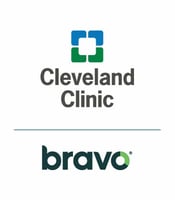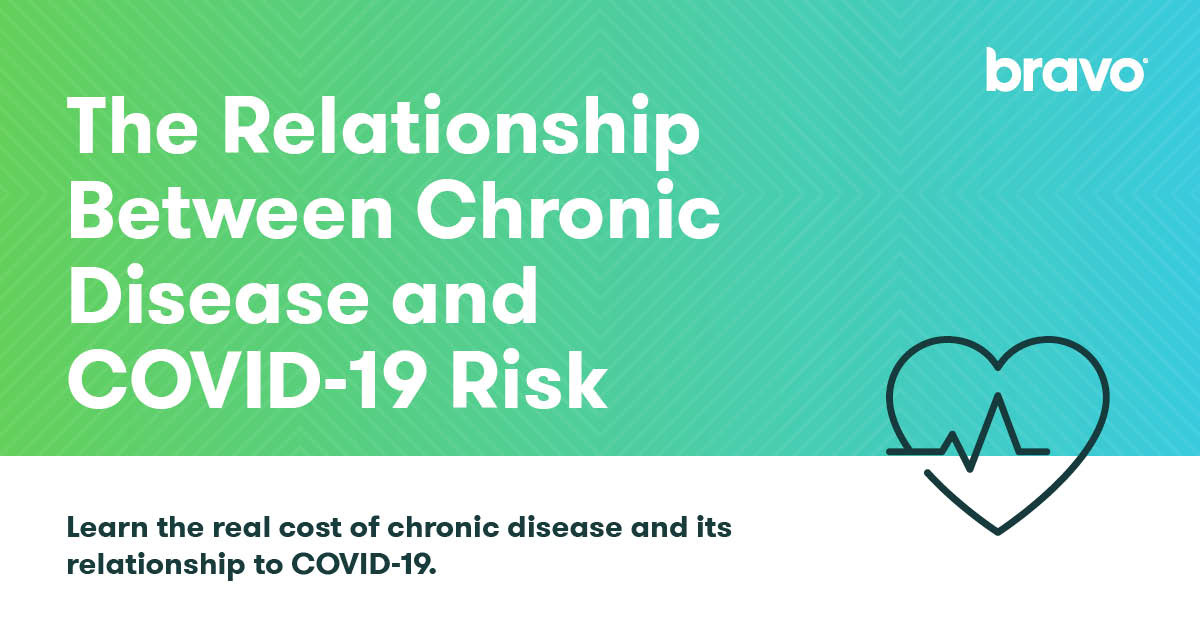From the recent hire to the recent partnership, or from the recent merger to the recent restructuring, organizations assume risk every single day. But no time in recent history has indicated a more significant personal and organizational risk than the COVID-19 pandemic.
Indeed, your employee population’s health and well-being is the greatest risk your organization faces on a daily basis. As an HR professional, you know this better than anyone.
Today, it is imperative to not only mitigate the dangers impacting your employees’ lives but also to address the global burden of chronic diseases that make them more susceptible to severe illness from COVID-19.
The Cost of Lifestyle-Related Chronic Disease
High-risk lifestyle choices like excessive drinking, smoking, physical inactivity and poor diet have always been an issue in our society.
Annually, poor health among employees cost US employers $530 billion.
These figures provide insight into the economic impact associated with preventable health risks:
- $198 attributed toward chronic health conditions
- $178 billion for incidental absence due to illness and FMLA
- $82 billion in missed revenues, costs of hiring substitutes and overtime
- $48 billion toward medical treatments and pharmacy costs
- $25 toward workers compensation
Healthcare costs associated with chronic disease have continued to increase exponentially over the past decade (read: before COVID-19). But not because we don't know how to eliminate 80% of or more of this burden.
A recent article by David Katz, MD, MPH, FACPM, FACP, FACLM outlines why chronic disease is a "slow-motion menace," whereas COVID-19 produces acute response:
"...Chronic disease is chronic, at least until it becomes acute (e.g., as when heart disease advancing slowly for years or decades suddenly precipitates a massive heart attack, or sudden cardiac death). The chronic is a slow-motion menace that quite simply does not capture our attention, concentrate our anxiety, stoke our desperation for remedies, or activate our fight-or-flight response. COVID, however, in its acute assault on our communities, in its onslaught of breaking news…does all of that."
The personal toll connected to poor physical health, and the way COVID-19 preys on those with chronic disease, is even more unsettling.
The Relationship Between Chronic Disease and COVID-19
New data from COVID-19 patients in the New York City area shows people with hypertension, obesity and diabetes—all of which can typically be managed or improved with lifestyle changes—are at much greater risk for hospitalization and even death from COVID-19.
According to the CDC, those at high-risk for severe illness associated with COVID-19 are:
- People 65 years and older
- People who live in a nursing home or long-term care facility
And, people of all ages with underlying medical conditions, particularly if not well controlled, including:
- People with chronic lung disease or moderate to severe asthma
- People who have serious heart conditions, including hypertension
- People who are immunocompromised (caused by things like cancer treatment, smoking, bone marrow or organ transplantation, immune deficiencies, poorly controlled HIV or AIDS, and prolonged use of corticosteroids and other immune weakening medications)
- People with severe obesity (body mass index [BMI] of 40 or higher)
- People with diabetes
- People with chronic kidney disease undergoing dialysis
- People with liver disease
Taking the necessary steps to address these preventable health risks with employees is essential under normal conditions and even more so during the pandemic.
“Much of what places us at higher risk for bad COVID outcomes is fixable, and COVID gives us a shared, potent motivation to fix it,” says Katz in his recent article.
Learn more about how to reduce chronic disease and COVID-19 risk on our webinar with Dr. Michael Roizen from The Cleveland Clinic:
How to address these costs and improve the health and well-being of your employees.
The cost of poor health in the workplace is well established. From personal struggles to organizational loss, how chronic disease and mental health issues impact your organization is undeniable—especially in the age of COVID-19.
To start, it’s vital to remember that you play a crucial role in your population’s overall well-being as an employer.
Establishing a culture of health and well-being, in conjunction with implementing a health-improvement-based wellness program, is an excellent way to decrease health risks and show your workforce your commitment to helping the organization come out stronger and healthier than before.
Now, more than ever, is a time to:
- Help your employees understand and manage their risk
- Help your employees improve their emotional health
- Help your employees avoid the biggest health risk in our society
Through our collaboration with Cleveland Clinic, we implement a full-service program complete with incentives administration, employee communications campaign, online portal and evidence-based coaching that spans the physical and emotional health spectrum.
This has enabled us to provide organizations a program with proven results in improving employee health risks.
It has also placed us in a position to guide employers through this pandemic with advanced reporting and clinically proven methods of health intervention that enables both employees and employers to improve their physical and mental well-being throughout these trying times.
With the proper guidance and assistance, your wellness program can help you:
- Identify risk through biometric screenings and health risk assessments.
- Manage preventable health risks that can lead to complications from COVID-19 if someone is infected through improvement-based incentives and evidence-based coaching.
- Help employees manage their stress and emotional well-being, arguably one of the top priorities for anyone right now, through emotional health coaching programs.
- Manage COVID-19 risk in your workplace through advanced health risk reporting by location, and configurable wellness plans to address high-risk locations.
Incorporating a personalized and data-driven wellness program is essential to avoid unnecessary financial loss while also improving the health and wellness of every employee and ensuring your workforce lowers their chronic disease and COVID-19 risk.
 Learn more about Bravo | Cleveland Clinic programs by requesting a demo. We'll review our employer and participant experience and show you how a risk-reducing wellness program empowers and rewards progress towards better health.
Learn more about Bravo | Cleveland Clinic programs by requesting a demo. We'll review our employer and participant experience and show you how a risk-reducing wellness program empowers and rewards progress towards better health.



